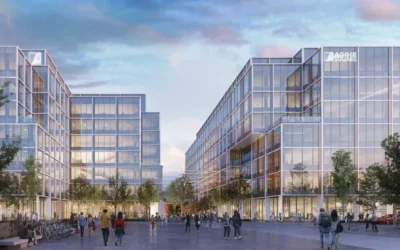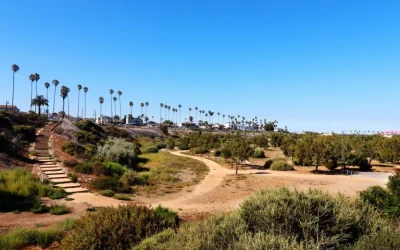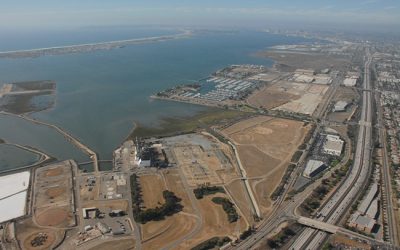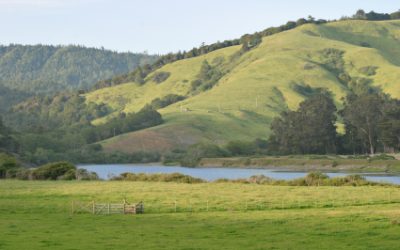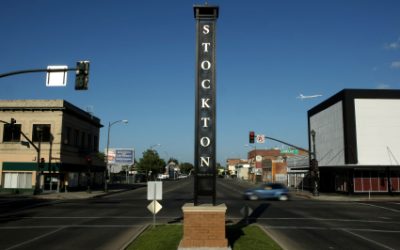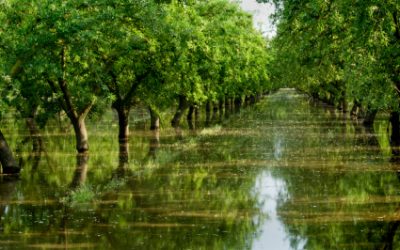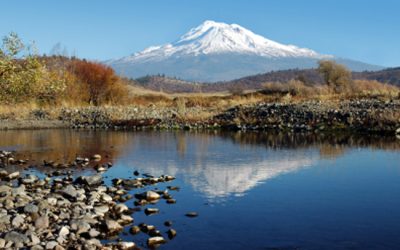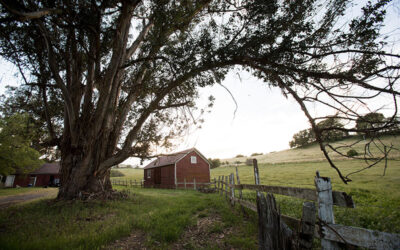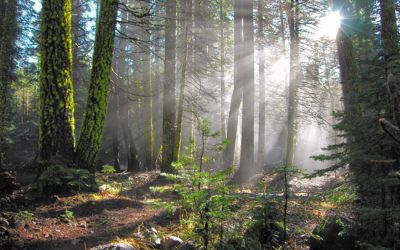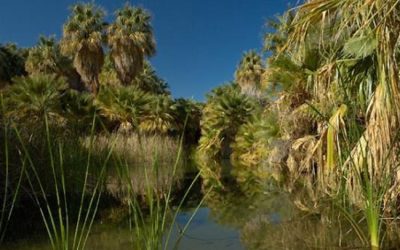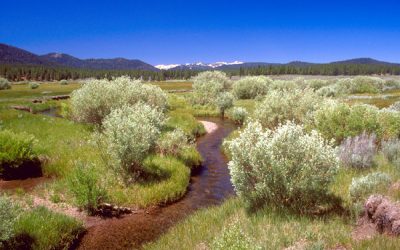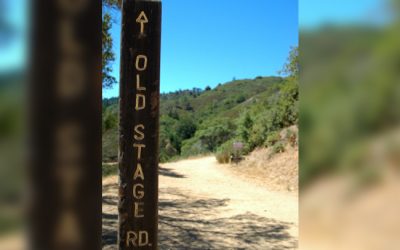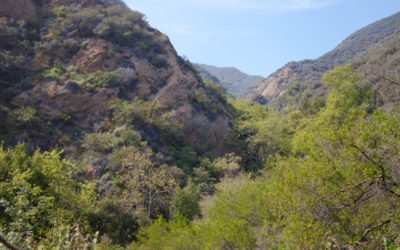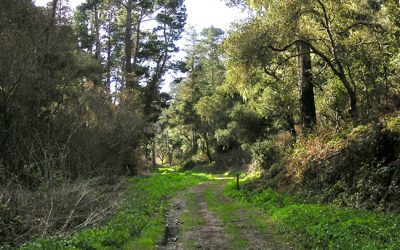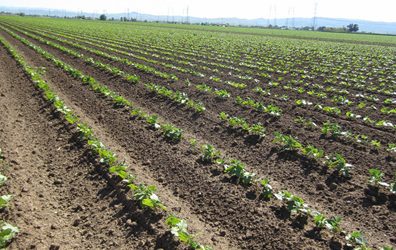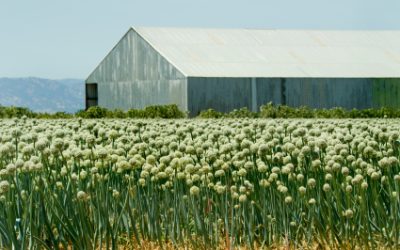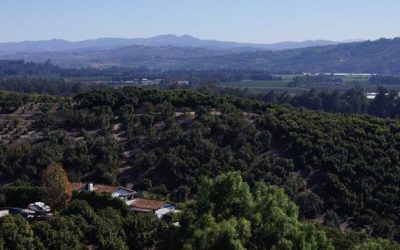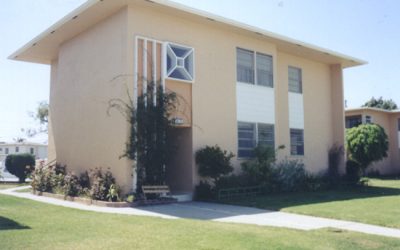CEQA Successes
From preventing polluting warehouses from being built near low-income neighborhoods in Fresno to protecting some our state’s most iconic natural places, there are hundreds of CEQA success stories from over the past 50 years demonstrating how CEQA has helped to protect public health and the environment. Set forth below are several examples, many of which are recent.
Information regarding the cases listed below was obtained from The Housing Workshop (2021), CEQA: California’s Living Environmental Law; BAE Urban Economics (2016), CEQA in the 21st Century; Planning and Conservation League Foundation & California League of Conservation Voters (2005), Everyday Heroes Protect the Air We Breathe, the Water We Drink, and the Natural Areas We Prize; California Attorney General’s website, oag.ca.gov/environment; The California Environmental Justice Alliance’s Green Zones website at calgreenzones.org, and other sources.
CEQA Successes: Community
Prioritizing Public Health and Farmland over Oil Companies in Kern County
In passing an ordinance to allow a massive expansion of oil and gas drilling, Kern County leaders ignored the devastating air, water, and noise pollution and farmland loss this drilling would cause....
Safeguarding a Community From Pollution Stemming From “World Logistics Center” in Moreno Valley
In 2015, the City of Moreno Valley approved the World Logistics Center, an immense development that would include 40.6 million square feet of warehouse space on more than 3,800 acres. The project...
Protecting School Children and Public Health in South Fresno
The community of South Fresno, predominantly populated by low-income people of color, is the most environmentally burdened neighborhood in all of California. Located just outside the city limits,...
Halting Oil Drilling Near Homes in Low-Income Community of Arvin
The City of Arvin is a small, predominantly Latino community located at the southern end of the San Joaquin Valley that lies directly over an oil field. Given the prevalence of oil and gas...
Pairing Growth with Local Benefits at a Major Transportation Hub in Millbrae
Millbrae Station is a multi-modal transit station on the San Francisco Peninsula. The City of Millbrae sets the long-term vision and standards for this station through a Millbrae Station Area...
Thanks to CEQA, Campus and Innovation Center in Sacramento Provides Local Jobs, Affordable Housing
The CEQA process gave voice to a community’s concerns about a major campus and innovation center planned for Sacramento. Through the CEQA litigation process, stakeholders significantly improved the...
Protecting Public Health in Riverside County
On February 14, 2013, Attorney General Kamala Harris announced the settlement of a Riverside County CEQA case that alleged failure to adequately analyze and mitigate a project’s impacts on residents...
Reducing Air and Noise Pollution from Ports of LA and Long Beach, While Supporting Economic Growth
The ports of Los Angeles and Long Beach form the largest port complex in the nation. They fuel significant job growth and economic activity in the region, but they also create massive amounts of air...
Protecting Community Voices, Clean Air, and Agriculture in San Joaquin Valley
When Chemical Waste Management, Inc (Chem Waste) proposed the construction of a toxic waste incinerator 3.5 miles from Kettleman City, a predominantly Latino community in the San Joaquin Valley,...
Forging a Thriving Chula Vista Bayfront Development: All things to all people
A dedicated community and diverse stakeholder groups used the CEQA environmental review process to create the Chula Vista Bayfront Master Plan. This Master Plan will serve the southern San Diego...
Requiring Sand and Gravel Quarries to Reduce Impacts on Local Community along Russian River
The town of Forestville, a quaint, rural community in the Russian River area of Sonoma County, is also home to two large sand and gravel quarries. When Sonoma County approved substantial expansions...
CEQA Successes: Climate
Ensuring Massive Development in Placer County Mitigates Its Impacts on Climate Change
In 2019,Placer County approved the controversial Sunset Area Plan development, which would encompass more than 8,500 acres in western Placer County near the cities of Roseville, Rocklin and Lincoln....
Combatting Climate Change Through Challenge to Freeway-Centric Regional Transportation Plan In San Diego County
In 2017, the California Court of Appeal found that the EIR for a regional transportation plan adopted by the San Diego Association of Governments (SANDAG) violated CEQA. The prevailing parties...
Requiring Massive “Newhall” Development in Los Angeles County to Slash Greenhouse Gas
Conservation groups used CEQA to challenge the Newhall Ranch development, one of the largest mixed use projects ever considered in Los Angeles County. While the project would increase GHG emissions...
Streamlining a Major Solar Electric Project in San Bernardino County While Protecting Workers and Habitat
Healthy natural areas play a critical role in absorbing greenhouse gases and stabilizing the climate. A utility-scale solar electric project in the desert of San Bernardino County was fast-tracked...
Promoting Green Energy at New Walmarts in the Inland Empire
Building plans for Walmart Supercenters in Perris and Yucca Valley were suspended after the Center for Biological Diversity and others filed lawsuits against the retailer in 2007 and 2008. Citing a...
Requiring Hospital in Sonoma County to Mitigate Greenhous Gas Emissions
In 2010, TRANSDEF, along with fellow litigants the Sierra Club and the California Nurses Association, prevailed in challenging Sonoma County’s approval of a new Sutter Hospital on the fringe of...
Requiring a Climate Action Plan in Stockton, an Area Suffering from Poor Air Quality
In 2007, the City of Stockton adopted a new General Plan that allowed massive sprawl development in new “villages” at the fringe of the City. Community members were concerned that the Plan would...
CEQA Successes: Air Quality
Protecting a West Long Beach Community from Air Pollution Generated by Large SCIG Railyard Project
In 2018, the Court of Appeal ruled that the Port of Los Angeles violated CEQA when it approved a large new railyard known as “SCIG” (Southern California International Gateway). The railyard would be...
Limiting America’s Cup Impacts on San Francisco Bay & Air Quality
In preparation for San Francisco’s hosting of the 2013 the America’s Cup, Piers 27 & 29 were slated to be demolished and rehabilitated to make way for a new two-story cruise terminal. However,...
ConocoPhillips: CEQA and Oil Refinery Expansion in Rodeo
In 2003, the ConocoPhillips Company proposed an expansion of its Rodeo oil refinery in order to produce cleaner burning low-sulfur diesel fuel. While this goal would benefit California in the long...
Improving Public Transit: The San Francisco Ferry Expansion Plan
Looking for opportunities to relieve congestion on Bay Area bridges and develop a comprehensive plan for managing population – and commuter – growth in the San Francisco Bay Area, the State of...
Securing Mitigation from Dow Chemical in Pittsburg
The City of Pittsburg’s Planning Commission approved a plan by Dow Chemical to rebuild a pesticide plant without requiring the company to prepare an EIR. The plant was intended to expand an existing...
Preventing Contamination in the Keller Canyon Landfill
After rapid expansion in the mid-1980s, Contra Costa County recognized the need for a new landfill and decided to take action. The County Community Development Department conducted a program EIR and...
Converting a Coal-Fired Power Plant to Cleaner Energy in the Central Valley
The southern end of California’s Central Valley is one of the nation’s most productive agricultural regions and as such requires clean air and clean water for its long-term economic vitality. In...
CEQA Successes: Water Quality
Protecting the Famed Clarity of Lake Tahoe
A conservation group used CEQA to challenge Placer County’s approval of a massive expansion of the Palisades Tahoe resort (previously named Squaw Valley). The project, which would take 25 years to...
Protecting the San Francisco Bay from Sewage Overflows
When the Catellus Development Corporation planned the Mission Bay Project, it was to consist of thousands of housing units, a 43-acre UC campus, and millions of square feet of office space. The...
Requiring Mitigation for Water Quality Impacts of Major Expansion of Port of Stockton
In 2004, the Port of Stockton approved a major expansion to triple its size. The Port acknowledged that the project would have a host of significant impacts on the surrounding San Francisco...
Requiring Scrutiny of Controversial Water Privatization Project in Stockton
In 2003, the City of Stockton approved a $600 million contract privatizing the City’s water utilities for a twenty year period. The contract ceded virtually all operational and managerial control of...
Protecting the Pristine McCloud River Near Mount Shasta
At the base of Mount Shasta, the McCloud River is one of the most famous and pristine trout streams in the world. In 2003, the Nestlé company submitted a proposal to bottle 520 million gallons of...
Protecting San Gabriel Groundwater Basin from Landfill Pollution
In 1994 the San Gabriel Groundwater Basin was in danger of pollution from an unlined landfill proposed by the Azusa Land Reclamation Company. Despite evidence that the landfill would pollute the...
CEQA Successes: Plants, Wildlife and Open Space
Leveraging CEQA to Extend a Park, Restore Habitat and Preserve Local History
Petaluma’s historic Scott Ranch property is home to open meadows, iconic red barns, bucolic Kelly Creek, and habitat for federally threatened California red-legged frogs. And it’s right next door to...
Protecting Mountain Lions in the Santa Ana Mountains
A coalition of conservation groups used CEQA to protect a dwindling mountain lion population in the Santa Ana Mountains. In 2018, they challenged the City of Temecula’s approval of a development...
Protecting Bay Marshland after Tumultuous History
The Breuner property, located in Richmond on the southeastern end of the San Pablo Bay, includes 238 acres of marshes and coastal prairie land. The property is the only possible path for the San...
Ensuring Public Engagement and Protecting Wildlife
For three years in a row (2008-2011), the California Department of Fish and Game proposed that the Fish and Game Commission increase the quota for the hunting of black bears. The Department also...
Preserving Old-Growth Redwoods in Humboldt County
Headwaters Grove in Humboldt County spans 3,000 acres and contains redwood trees that are over 2,000 years old. This area was the largest unprotected old-growth redwood forest in the world and was...
Preserving California’s Threatened Walnut Woodlands
Chino Hills State Park, located in the foothills of the Santa Ana Mountains in Orange County, is a 14,000 acre-park encompassing rolling, grassy hills and large stands of oaks, sycamores, and walnut...
Preserving Critical Habitat for Endangered Species in Coachella Valley
The Palmwood Estates project would have created a huge resort and golf complex in the Coachella Valley near the popular Joshua Tree State Park. The Coachella Valley provides critical habitat for...
Preserving a Key Gateway to Lake Tahoe
Thanks to a lawsuit brought under the California Environmental Quality Act, major landowners agreed to preserve most of the near-pristine Martis Valley while allowing appropriate development...
Protecting Sensitive Trails on Mt. Tamalpais
The California State Parks and Recreation Department had long hoped to open single track trails to bicycle usage. In 2003, the Department planned some reconfiguration of narrow, sensitive hiking...
Protecting Rich Biological Resources in San Diego’s Backcountry
San Diego County has more biodiversity than any other county in North America and is among the top 10 biodiversity regions on earth. Given these extraordinary resources, a local environmental...
Preserving Key Sections of the Santa Monica Mountains
The California State Legislature established the Santa Monica Mountains Conservancy in 1980. CEQA has played a key role in protecting about 20,000 of the 69,000 acres that have been preserved to...
Stopping an Unnecessary Freeway Through a Forested Canyon in Monterey County
The Hatton Canyon Freeway, a 3-mile bypass east of the City of Carmel, was one of the most controversial projects ever proposed in Monterey County. The Caltrans plan was to construct the new freeway...
CEQA Successes: Farmland
Keeping Agriculture Local in the San Francisco Bay Area
The loss of farmland to residential development is one of the critical challenges facing agriculture in California. In 2006, Greenbelt Alliance challenged the City of Oakley’s approval of the...
Protecting the Central Valley’s Fertile Agricultural Lands
California’s Central Valley contains some of the richest agricultural lands in the world. In 2004, the San Joaquin County Local Agency Formation Commission (LAFCO) approved the City of Stockton’s...
Preserving a Vibrant Agricultural Community in Ventura County
The tiny town of Somis lies in the heart of Las Posas Valley, one of Ventura County’s richest agricultural regions. For many years, Caltrans had plans on its books to widen two-lane Highway 118...
CEQA Successes: Cultural Resources
Respecting Sacred Tribal Sites and Honoring Community Concerns in San Diego
In 2004, the Chancellor of University of California, San Diego determined that his home, University House, was unfit to live in and had the building closed. In addition to being much loved...
Preserving An Historic Apartment Complex in Venice
Lincoln Place is a 33-acre, 1951 garden apartment complex off of Lincoln Boulevard in Venice. It was built by architect Heth Wharton and African-American designer Ralph Vaughn. When demolition...






